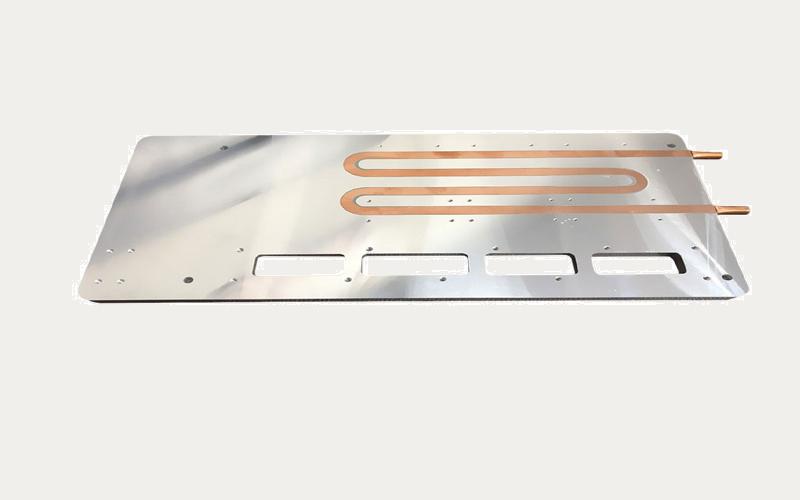Introduction to Liquid Cold Plate Manufacturing
Liquid cold plate manufacturing is a crucial aspect of thermal management in various industries. These innovative heat transfer devices are designed to efficiently dissipate heat generated by electronic components, power modules, and other heat-sensitive devices. By utilizing liquid as a cooling medium, cold plates offer superior thermal conductivity compared to traditional air cooling solutions. In this article, we will delve into the various aspects of liquid cold plate manufacturing, exploring its benefits, applications, and the manufacturing process itself.
The Advantages of Liquid Cold Plate Manufacturing
Liquid cold plate manufacturing offers numerous advantages over conventional cooling methods. Firstly, liquid cooling provides a significantly higher heat transfer rate, enabling efficient dissipation of large amounts of heat. This allows electronic components to operate within their optimal temperature range, improving their performance and reliability. Additionally, liquid cold plates offer a compact design, making them suitable for applications with limited space. Moreover, liquid cooling solutions are environmentally friendly, as they reduce energy consumption and overall carbon footprint.
Applications of Liquid Cold Plates
The versatility of liquid cold plates makes them ideal for a wide range of applications. One prominent application is in the field of power electronics, where cold plates are used to cool high-power semiconductor devices, such as insulated-gate bipolar transistors (IGBTs). These devices generate significant heat during operation, and liquid cooling provides an efficient means of heat dissipation. Liquid cold plates are also employed in the aerospace industry, where they cool avionics systems, satellite components, and onboard electronics. Other industries that benefit from liquid cold plate manufacturing include medical equipment, renewable energy systems, electric vehicles, and telecommunications.
The Manufacturing Process of Liquid Cold Plates
The manufacturing process of liquid cold plates involves several key steps. Firstly, the design phase involves determining the dimensions, layout, and materials of the cold plate. The choice of materials is crucial, as they must possess excellent thermal conductivity and corrosion resistance. Common materials used in liquid cold plate manufacturing include copper, aluminum, stainless steel, and various alloys. Once the design is finalized, the manufacturing process moves on to fabrication, which typically involves techniques such as CNC machining, brazing, and welding. The cold plate is then tested for quality assurance, ensuring it meets the required thermal performance specifications.
Advanced Technologies in Liquid Cold Plate Manufacturing
With advancements in technology, liquid cold plate manufacturing has seen several innovations. One such innovation is the use of microchannels in cold plate designs. By incorporating microchannels, the surface area available for heat transfer is significantly increased, leading to improved cooling efficiency. Additionally, additive manufacturing, commonly known as 3D printing, has revolutionized cold plate manufacturing. This technique allows for complex geometries, customized designs, and reduced production time, making it an attractive option for various industries.
Choosing the Right Liquid Cold Plate Manufacturer
Selecting a reliable and experienced liquid cold plate manufacturer is crucial to ensure the quality and performance of the cooling solution. When evaluating potential manufacturers, consider their expertise in thermal management, their track record in delivering high-quality products, and their ability to provide custom solutions tailored to your specific requirements. It is also essential to assess their manufacturing capabilities, quality control processes, and adherence to industry standards and certifications.
Maintaining and Optimizing Liquid Cold Plates
Once installed, proper maintenance and optimization of liquid cold plates are essential for long-term performance. Regular inspections, cleaning, and leak testing should be carried out to ensure the integrity of the cooling system. Additionally, optimizing the flow rate and choice of coolant can further enhance the cooling efficiency of the cold plate. Working closely with the manufacturer or a thermal management expert can provide valuable insights and recommendations for maximizing the performance of liquid cold plates.
Future Trends in Liquid Cold Plate Manufacturing
The field of liquid cold plate manufacturing is continuously evolving, driven by advancements in technology and increasing demands for efficient thermal management. One notable trend is the integration of liquid cold plates into advanced packaging techniques, such as system-in-package (SiP) and integrated power modules. This integration allows for more compact and efficient cooling solutions in high-density electronic systems. Additionally, the use of advanced materials, such as graphene and nanofluids, shows promise in further enhancing the heat transfer capabilities of liquid cold plates.
Conclusion
Liquid cold plate manufacturing plays a crucial role in thermal management, offering superior heat dissipation capabilities and efficient cooling solutions for a wide range of industries. By understanding the advantages, applications, manufacturing process, and future trends in liquid cold plate manufacturing, businesses can make informed decisions when it comes to selecting and optimizing their cooling solutions. Collaborating with experienced manufacturers and thermal management experts ensures reliable and effective liquid cold plates that meet the unique requirements of each application.

